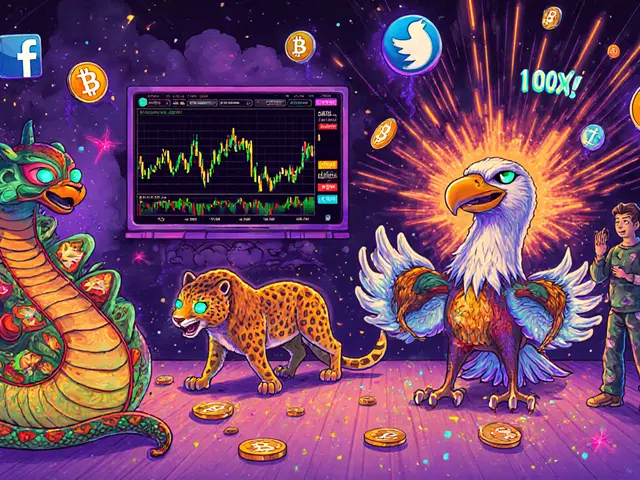Meme Token: What They Are, Why They Rise, and Which Ones Are Just Noise
When you hear meme token, a cryptocurrency created as a joke or internet meme, often with no real utility or team behind it. Also known as memecoin, it typically gains traction through social media hype, not technical innovation. You’re not looking at an investment—you’re looking at a cultural moment. Meme tokens like Dogecoin and Shiba Inu didn’t start as financial tools. They started as memes. Dogecoin was a joke on Reddit in 2013. Shiba Inu copied that energy five years later. But something weird happened: people started buying them. Not because they understood the code. But because everyone else was.
What makes a meme token stick? It’s not the tech. It’s the community. A strong group of holders who tweet, post, and rally around a shared identity. That’s why some meme tokens survive while others die in days. The ones that last have a personality—Dogecoin’s playful dog, Shiba Inu’s aggressive branding. They don’t need a roadmap. They need a crowd. And that crowd often doesn’t care about security, audits, or tokenomics. They care about whether it feels fun, rebellious, or viral. That’s why meme tokens are so unpredictable. One tweet from a celebrity, one viral TikTok trend, and a coin with zero real use can spike 500%. But remove the hype? It collapses. No liquidity. No buyers. Just a ghost of a price chart.
Most meme tokens you’ll see today are dead on arrival. Look at the posts below. You’ll find coins like Big Dog (BIGDOG) and Diyarbekirspor Token (DIYAR)—zero trading volume, no team, no future. Others, like RACA and SAKE, are tied to real projects with active users. The line between a joke and a gamble is thin. And the market doesn’t care if you’re in it for fun or profit. It only cares if someone’s willing to buy at a higher price. That’s the game. You don’t need to understand blockchain to play. But you better understand risk. The posts here don’t just list meme tokens. They show you which ones are still breathing, which ones are zombies, and which ones were scams from day one. You’ll see how communities form, how hype turns to dust, and why the most dangerous meme token is the one that looks like it’s working—until it isn’t.










